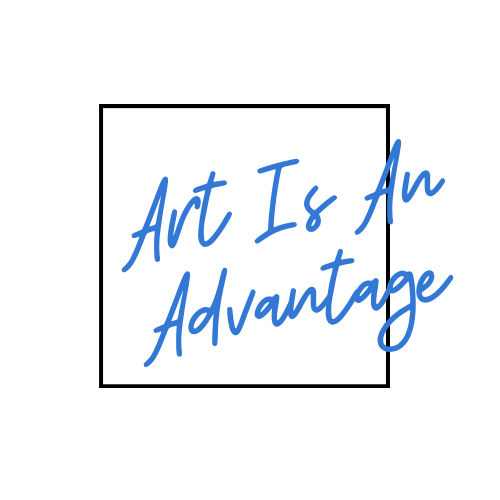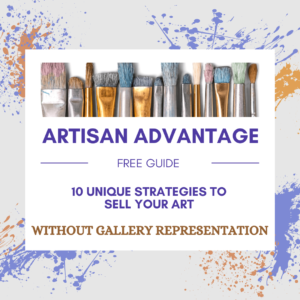by Becky Sciullo | Mar 4, 2021 | Artist Blogging 101, Blogging, Tools
Many artists understand that maintaining a consistent web presence could help with sales, but feel they don’t have time for a blog. They’d rather be creating. And, I get that!
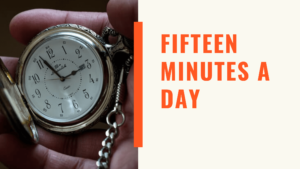 Fifteen minutes a day to a web presence.
Fifteen minutes a day to a web presence.
What if I told you that you could invest fifteen minutes a day in your web presence to see results? In Blogging for a Visual Art Business, I explain that if you get into a consistent habit of writing and working on your blog, you can maintain a system that eventually can take as little as fifteen minutes of your time every day.
This article by Michael Hyatt explains this concept well. Little bits of progress consistently over time will reap the rewards in the long run.
Invest in your art business.
I’m not going to lie, though. You will need to invest some time on the front end. But, after you build your system, you will be able to maintain your online presence in fifteen minutes a day.
Daily is better than monthly.
Working on your system every day keeps you fresh. It helps you to build momentum. It’s easier than sitting down once a month to update things.
Four Necessary Ingredients
If you are serious about starting and maintaining a blog that will drive your art marketing forward, consider the Artist Blogging Toolbox. This program has all four of the necessary ingredients outlined in the article.
1 – Get Clear on Your Goals
The first action in the Toolbox is to outline the goals you want your artist blog to accomplish for your business.
2 – Identify the Right Behavior
After your blog is set up with your first set of posts, you will learn how to set up a system that includes daily behaviors that work to continue to build your presence.
3 – Track Your Progress
The Artist Blogging Toolbox includes tools you can use to plan out your posts and stay on track with your plan.
4 – Accountability Partner
Perhaps the most significant selling point of the Program: You are not alone! This is a self-paced program, but it includes points for checking in and one-on-one meeting time between you and me working specifically on your blog.
Positive Habits Make Progress
Fifteen minutes a day of any proactive activity can help your business. Even if it’s not blogging, try committing fifteen minutes every day to one positive thing you’re already doing to market your work.
If you’d like to set up a fifteen-minute Zoom meeting with me to talk about how the Artist Blogging Toolbox might help you, please drop me a line at becky@artisan-advantage.com.
Would you like weekly updates to help build your art business. I’d love for you to join my email list.
by Becky Sciullo | Mar 1, 2021 | Events
Free Presentation! Use Blogging to Build Your Art Business
 Join me for Blogging for Your Visual Art Business on Saturday March 20 at 10:00 am EST.
Join me for Blogging for Your Visual Art Business on Saturday March 20 at 10:00 am EST.
Attend this free presentation about how to use blogging to create an effective marketing system for your visual art.
This presentation uses my personal experience and real-life examples to outline a system any visual artist can use. The information is relevant for many popular web platforms such as WordPress, Weebly, Squarespace, or FASO. Learn how to consistently share work with an audience across various marketing channels such as social media and email marketing using an easy to use blogging platform as the driver for your business.
My goal is for you to gain a new enthusiasm for building a web presence, whether you are starting from scratch or improving upon an existing website. Blogging to Build an Art Business offers advice for starting and maintaining this system in a manageable way.
Reserve your spot at the link below.
Blogging for a Visual Art Business
Saturday, March 20, 2021
10:00 am EST
by Becky Sciullo | Mar 1, 2021 | Learning
Here are some marketing ideas for your Monday morning
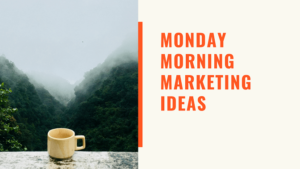 Four Art Marketing Ideas
Four Art Marketing Ideas
1 – Can you offer royalty-free downloads as a source of revenue directly from your site? Or, paid downloads can be a good option for interior designers, publishers, corporate art buyers, and others searching for specific images for a particular project or decor. You will have to come up with a licensing agreement. You can keep it simple by making it royalty-free, which means they only pay for the image once. Then, you outline the access they can have for the use of the image after that.
2 – Offer a personal appointment for local customers who prefer minimal interaction and distant customers wishing for individual attention. Allow clients to schedule a private session with you, in-person or virtual, to look closely at the pieces they are considering. This approach allows you to discuss the stories behind your work and help them to find the perfect piece for purchase.
3 – Do you have a business where you are serving two distinct audiences? For example – you may be a fine art photographer and also provide work for an industry such as real estate. Don’t hesitate to maintain separate profiles on social media. Yes, there can be some overlap and cross-marketing, but defining these platforms can help you attract customers rather than confuse an audience.
4 – Be available to your fans. Having an online presence means that people around the world can discover your work 24/7. To make the most of this opportunity, you must be accessible. Make it a habit to respond to all art inquiries that come in overnight. Make time on your schedule to speak with people or set up Zoom meetings. It may be outside regular business hours for your time zone, so consider this when setting up your schedule.
Get More Art Marketing Help
Would you like weekly updates with information like this to help your art business? Sign up for my mailing list here.
If you’re signed up for my email newsletter and NOT receiving my weekly updates, please check your spam folder
by Becky Sciullo | Feb 26, 2021 | Artist Blogging 101
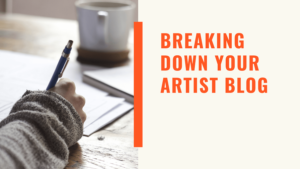 Understand the parts of a blog-based website.
Understand the parts of a blog-based website.
If you’re new to blogging for your art business or just about to build your blog-based website, it’s helpful to have a good knowledge of all of the site’s external components before getting started. Understanding the terms used to describe these parts across most platforms will also make things go smoother when setting up your site.
Here is a quick overview of all of the components you will work with when you set up a blog. Over the next few weeks, I’ll dive into what you should consider for each part when setting up your blog.
Header
The header is the eye-catching section of your site that people notice first. It features the work and sets the tone for your site. If possible, you want to use an image of your work in the header. If your art is two-dimensional, consider work that fits best according to orientation, in most cases a horizontal scene, and then consider the layout. The layout will depend upon the theme or template you are using.
Menu
A website menu is a series of linked items that serve in navigating between the different pages or sections of a website. There are several kinds of menus, depending on the website’s content and design.
The navigation menu is one of the most critical elements of your website. Without it, your visitors will not be able to get to the content they need, won’t understand what content you offer, and will generally exist in a state of confusion regarding your site.
Below is an example of an artist header with the menu at the bottom of the header.
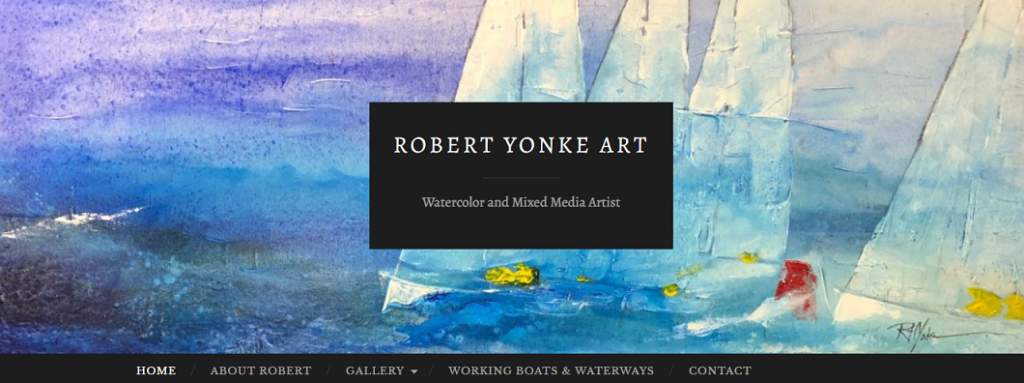
Sidebar
In short, a sidebar is a column placed to the right or left of a webpage’s primary content area.
Commonly used to display different types of information for visitors, it might include the following:
Navigational links to key pages.
Email opt-in forms.
Popular or related posts.
Social media icons or links.
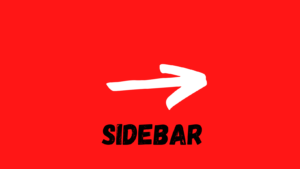
Not all websites need sidebars, and some designs are much better off without one. You can also use them for short bios and other text you might want to share.
While the uses mentioned are some of the most common ways sites put sidebars to work,
The primary advantage of incorporating a sidebar into your website’s design is that it remains visible as users navigate your site. The sidebar allows you to make essential information and features readily available at all times.
Sometimes, sidebars don’t translate well to mobile devices. If you do include a sidebar, consider hiding it for mobile viewers.
Footer
The footer is the area at the bottom of your site that contains information shared across all pages and posts. Footers typically include things like copyrights, addresses, and menus.
Blog posts:
Blog posts are the entries that appear in reverse chronological order. They contain the regular content that you are creating.
You will find posts in Archives, Categories, Recent Posts, and other places on your site.
You can control the number of posts that appear on the blog at one time. As an example, my home page lists my blog posts.
Pages:
Your pages are static. They do not include a date and do not use tags or categories. You can place links to your pages anywhere, but they typically show up in your menu, sidebar, or footer.
You have total control over the arrangement of your pages and can add as many as you like.
More Details to Follow
There may be some nuances across platforms, but for the most part, these are the standard components of a blog-based website. Stay tuned for more detailed posts on each part of the blog in individual posts.
For step-by-step assistance in setting up your artist blog, check out my Artist Blogging Toolbox.
by Becky Sciullo | Feb 22, 2021 | Learning
Here are some marketing ideas for your Monday Morning.
 Five art marketing ideas:
Five art marketing ideas:
1 – If you actively seek commissions, offer an in-person Zoom meeting with prospective clients to discuss their projects. People who find your work online may be more likely to choose you for the commission if they can make a personal connection. Zoom offers a free service that anyone can use. Publicize this service on your blog and social media.
2 – If you have a decent Twitter following, create email newsletters that followers can subscribe to with Twitter Revue.
3 – Does your county have an economic development office? They may put out a newsletter to local businesses, and if so, they are probably looking for news. Do some research on your county to find it. Then, add the publication to your media contact list.
4 – Create interest in new work with a “Work in Progress” collection on your website. Offer collectors the ability to reserve a piece that is in the works.
5 – Present a virtual studio tour right from your blog? Yes, you can! Look at this excellent example I found from Starpoint Studio.
Get More Art Marketing Help
Would you like weekly updates with information like this to help your art business? Sign up for my mailing list here.
If you’re signed up for my email newsletter and NOT receiving my weekly updates, please check your spam folder
 Fifteen minutes a day to a web presence.
Fifteen minutes a day to a web presence. 